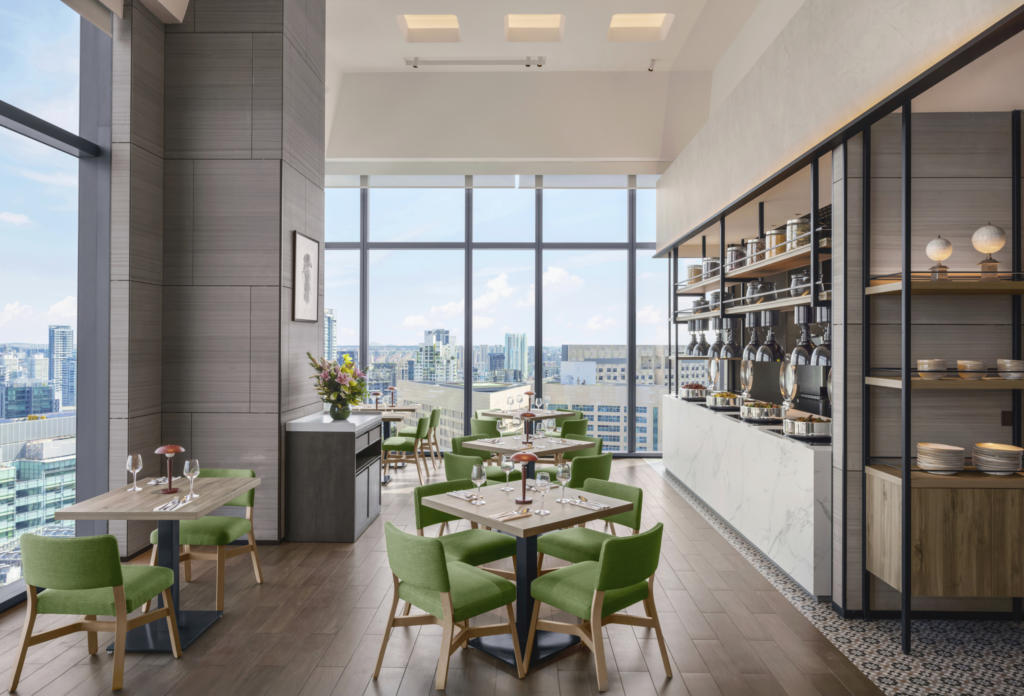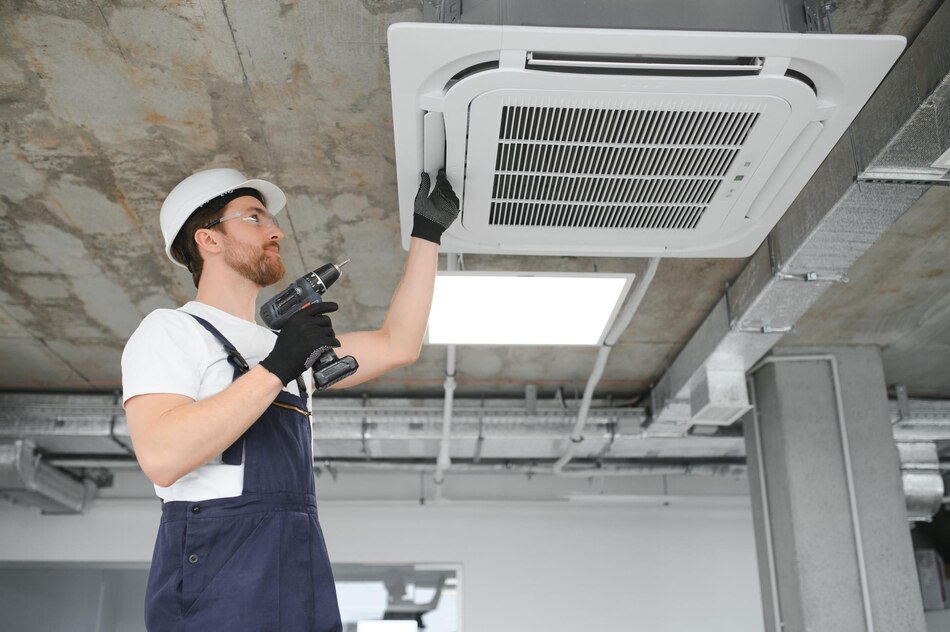Courtyard by Marriott Singapore Novena is set to delight tea lovers with an exciting new addition to its culinary offerings. Starting March 1, 2025, Sky22, the hotel’s elevated dining venue, introduces its High Tea for Two, a reimagined afternoon tea experience that offers a sophisticated twist on classic British tea-time delights. Available daily from 3:00 PM to 5:00 PM, this indulgent experience invites guests to enjoy a rotating monthly theme that showcases the freshest seasonal ingredients and inventive flavors.
Curated by Head Chef Chris Lee, a seasoned pastry chef with over two decades of experience in renowned establishments like Tea Palace, Below Zero (now ICEBAR BY ICEHOTEL), and The Patissier in Singapore, the High Tea for Two promises to elevate the art of afternoon tea. Known for his creativity and commitment to using high-quality ingredients, Chef Chris Lee’s curated menu for Sky22 at Courtyard by Marriott Singapore Novena sets the tone for a luxurious, unforgettable afternoon experience.
- An Elegant Setting for Afternoon Tea
- Delicious, Seasonal Ingredients and Monthly Themes
- A Comprehensive Tea Selection
- A Luxurious Experience for Every Occasion
- Making Reservations and Staying Informed
- Final Thoughts
An Elegant Setting for Afternoon Tea
Sky22 offers guests more than just a delectable afternoon tea experience. The venue provides breathtaking panoramic views of Singapore’s skyline, paired with floor-to-ceiling windows that flood the space with natural light. The sophisticated yet cozy ambiance ensures that guests feel comfortable while enjoying the spectacular sights of the city. The restaurant’s inviting design creates an ideal atmosphere for an afternoon of relaxation, whether you’re catching up with friends, celebrating a special occasion, or simply treating yourself to a luxurious tea experience.
Sky22’s High Tea for Two is priced at SGD 48++ for two people, and it is available daily between 3:00 PM and 5:00 PM. The price is well worth it for the incredible value, offering a comprehensive menu of both sweet and savory delights. The tea experience focuses on delivering high-quality, flavorful ingredients that are creatively combined to offer both familiarity and excitement.
Delicious, Seasonal Ingredients and Monthly Themes
Each month, Sky22 introduces a new theme that centers around the season’s freshest ingredients. For the month of March, the spotlight is on seasonal berries. Their natural sweetness and tartness are skillfully highlighted through various innovative offerings. One of the standout treats for March is the strawberry lychee and basil mousse—a perfect harmony of sweet fruitiness and refreshing herbaceous notes. Another indulgence is the summer berry burnt cheesecake, a bite-sized masterpiece that captures the essence of the season with every bite. Lemon strawberry madeleines provide a zesty addition to the sweet selections, while guests can also enjoy the fluffy scones, served with lush berry jam and silky Chantilly cream.
In addition to the sweet treats, the savory options at Sky22’s afternoon tea are equally impressive. Guests can start their tea experience with a choice between a delicate Cornish pie or a rich chicken pie filled with luxurious morel cream. These pies are perfectly complemented by the refined smoked salmon tea sandwich, which is enhanced with dill and sour cream. Another delight is the Kuih Pie Tee, a modern Western take on the traditional local dish, reimagined with caprese ingredients and topped with balsamic caviar. The savory selections continue with a delicious bruschetta-style creation, featuring thin, crisp bread adorned with fragrant goat cheese, honey, and fig.
A Comprehensive Tea Selection
The High Tea for Two at Sky22 wouldn’t be complete without a selection of fine teas or coffees. Guests can choose from a variety of teas, including timeless classics such as English Breakfast, the elegant Earl Grey, and refreshing Jasmine Green Tea. For those who prefer herbal options, there are soothing choices like Peppermint and Chamomile, along with Ceylon Green Tea for an extra burst of refreshment. Guests can also opt for free-flowing coffee, providing a perfect balance of flavors to accompany the sweet and savory items served at the tea table.
The carefully curated tea selection complements the high tea’s delicate flavors, ensuring each item is enhanced by the beverage of your choice. Whether you prefer a traditional tea or an aromatic coffee, the pairing options at Sky22 will take your afternoon tea experience to a new level.
A Luxurious Experience for Every Occasion
Sky22’s High Tea for Two is perfect for all occasions, whether you’re celebrating a special milestone, enjoying a relaxing afternoon with friends, or hosting a memorable gathering. The venue’s prime location and elegant atmosphere make it an ideal spot for tourists looking to enjoy a luxury experience in Singapore, or for locals who want to indulge in a classic tradition with a modern twist.
Guests can also take advantage of the Marriott Bonvoy program, where they can earn and redeem points for dining experiences at Sky22. Marriott Bonvoy members can enjoy exclusive perks while savoring the High Tea for Two, making it a rewarding experience for those who love to dine and earn points.
For those looking to extend the experience, Courtyard by Marriott Singapore Novena offers other top-tier dining options that complement the exquisite afternoon tea. With a variety of restaurants, lounges, and bars within the hotel, guests can explore more culinary delights after their high tea experience.

Making Reservations and Staying Informed
Given the popularity of Sky22 and its newly launched afternoon tea offering, reservations are highly recommended to secure a spot for this delightful experience. For those looking to make a reservation, it’s easy to do so through Sky22’s SevenRooms platform. Or reach out via phone at +65 6250 0303 to book your table.
Stay informed about the latest updates and upcoming themes for the afternoon tea by following Sky22’s social media channels or signing up for the Courtyard by Marriott Singapore Novena newsletter. By staying updated, you’ll be among the first to know about the unique monthly themes and special promotions.
Final Thoughts
Courtyard by Marriott Singapore Novena’s Sky22 has redefined the afternoon tea experience with its High Tea for Two offering. From the seasonal flavors to the stunning views and elegant ambiance, this new addition to the vibrant Novena district is sure to become a must-visit destination for locals and tourists alike. Whether you’re looking to enjoy a relaxed afternoon, celebrate a special occasion, or indulge in a luxurious tea experience, Sky22 offers everything you need to make your time in Singapore unforgettable.
























You must be logged in to post a comment.